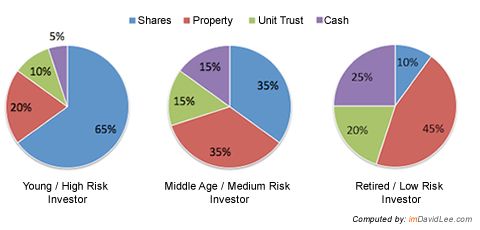Asset allocation is essential for investors to achieve long term financial success. Any investor who seeks to increase his returns, protect his investment from specific risks, and maximize his wealth, must exercise prudent asset allocation strategies.

So, what exactly is asset allocation? It refers to the process of dividing one’s investments across various asset classes (eg. cash/FD, property, unit trusts, shares). Depending on factors such as age and level of risk tolerance, different people may have different asset allocation strategies.
For example, a person who is closer to retirement age would usually contribute less of his capital to high-risk assets. A young entrepreneur, on the other hand, could be the exact opposite. Because different classes of assets react differently to changing market conditions, thus proper asset allocation allows you to manage the ups and downs of the financial market over the long run.
How to Determine the Right Asset Allocation for Yourself?
Since asset allocation is greatly influenced by personal preferences as well as the experience, investment goals, and amount of money a person has, it is important to realize that there is no perfect asset allocation strategy that fits everyone. Generally, your asset allocation strategy would be determined by:
– Your attitude towards risk: how much short-term losses can you handle?
– Your investment time horizon: how long can you put your money away for?
– Your individual circumstances: how much future financial commitments do you have?
The Issue of Age
Age is a key factor when it comes to deciding on asset allocation strategy. As you grow older, it is important that you alter your asset allocation to reflect the change in circumstances. If you continue to invest like how you were 10 or 15 years earlier, you may be undertaking undue amount of risk.
Examples of Asset Allocation Strategies

In the next article, I’ll share with you about my investment portfolio by adopting asset allocation and diversification strategies. Stay tuned…
